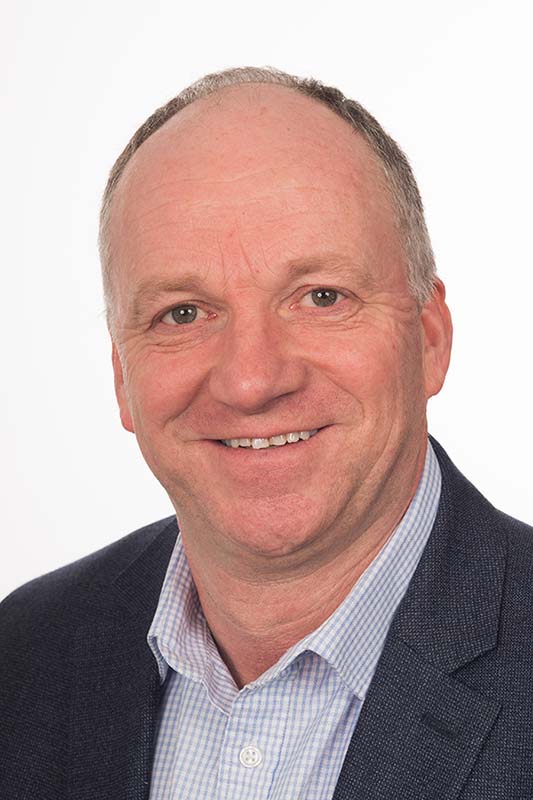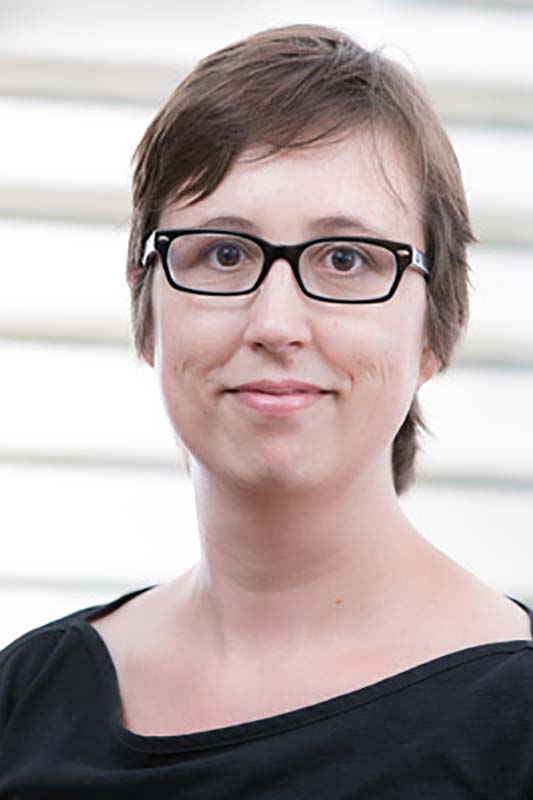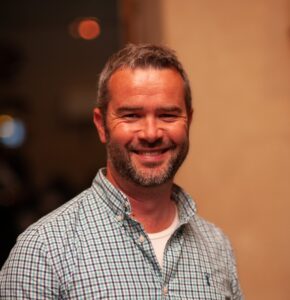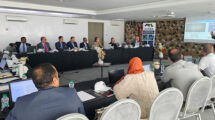The GÉANT Project over its many generations (GN1, GN2, GN3, GN3plus, GN4-1, GN4-2, GN4-3) has been supporting Europe’s Research and Education (R&E) communities for over 20 years. As we look to the potential next phase of the project, CONNECT took the opportunity to speak with two of the project’s key figures, Matthew Scott (GÉANT) and Ann Harding (SWITCH), to understand what has led to such long-term success in a project environment that spans all of Europe and boasts over 400 participants, multiple Task Leaders (TLs), and Work Package Leaders (WPLs, formerly Activity Leaders).
Interview by: Paul Maurice, GÉANT


Ann Harding spent ten years as Activity Leader for Multi-domain Services and then Trust and Identity Activities. In 2020 she was honoured in the GÉANT Community Award for her work in the Trust and Identity field specifically for overseeing the growth of two services that are synonymous with GÉANT: eduroam and eduGAIN. She now leads the Infrastructure and Platform team at SWITCH.
Matthew, excellence in the project has consistently been achieved, so what is it that shapes the project so positively in such a consistent way?
Right from the early days, the GÉANT project has received tremendous support from its key stakeholders and consortium partner NRENs, and of course from the European Commission (EC).
One particular feature of the project consortium is in the natural desire of the participants to collaborate. I say ‘natural’ because by definition the community of R&E Networks rely on each other, not only to ensure that the value of an international research network and associated service can be realised and appreciated by their own stakeholders and users, but also because the desire or passion to achieve this is a key motivator for all the contributors who really believe in the collaborative cooperative federated model that these projects encompass.
The continued support from the EC is also a longstanding factor, and one that acts very practically with their financial support that enables the project to function. This is an operational model that really exemplifies a truly European success story.
The governance of the GÉANT Association as the coordinator is also strongly based on a membership association, with nearly all the higher-level non-Executive positions being held by NREN staff, and their ability to secure consensus and find a common path even if it needs some compromises on occasion.
Ann, what do you see as the benefits and challenges for NREN staff taking leading roles in a project such as GÉANT?
You will never in your NREN life have such an opportunity for impact. You will never be as surrounded by people with such wonderful ideas and energy, with such diverse perspectives. You will have to learn to say no, and to occasionally disappoint people.
Small, simple changes will be much harder than you expect because nothing is small or simple with over 30 countries involved.
You don’t have traditional authority so your soft skills will become your most effective tool. Trends in organisational development for most agile organisations are increasingly trending away from hierarchy and command/control structures, to loosely coupled teams with autonomy, and you’ll never have a better training ground for leading in this kind of environment.
In short, almost every aspect of what you do and how you can do it will have both benefits and challenges, and sometimes it is the challenge itself that is the benefit.
Matthew, how important has training for WPLs and TLs been?
It is hugely important. Ann pointed to that in the previous question, but possibly one of the most impactful measures taken at the start of the GÉANT projects was to engage a very inciteful coach (Isobel Heaton – who I’m sure some readers remember). Isobel understood the challenges faced by the WPLs and TLs in managing virtual teams and helped us all develop many of the soft skills needed for working in such a diverse and distributed structure.
But that is just one of many examples where the human networking and knowledge sharing through workshops and training has brought so much benefit to us all as individuals and to the community as a whole.
Ann, what was your best moment in the last 20 years of GÉANT Projects?
This is an impossible question. Firstly, they’re not ‘my’ moments, they belong to the Task and Activity/Work Package members. Sometimes I was the face of them (as in the successful independent project reviews), sometimes very peripheral, but loving being part of something bigger (such as watching eduroam CAT take off).
But a lot of the time it was the deep professional working relationships with amazing people like Afrodite Sevasti (of Greek NREN GRNET) in my multidomain network days where you’re really taking a look at the future and trying to reach it.
Matthew, what was the proudest moment of the project so far?
As Ann says, it’s important to consider this from the perspective of the project rather than an individual view. There are so many fine achievements of the projects over the 20 years, so it is really hard to pick out any single moment.
Perhaps the best way to answer this is to reflect on the sustainability and growth of the overall programme, as evidenced not only by the commitments shown by the EC in now funding 7-year framework programmes rather than single projects, but by the joint consortium’s well-earned reputation as the project that keeps delivering across such a wide spectrum of technologies and services for R&E.
In terms of specific memorable moments, probably the best recollections are when we are all able to gather at one of our ‘all hands’ symposia where the vital energy and enthusiasm is really palpable and the noise… well… you’d have to be there to appreciate that it’s the human network
that makes the network work!
Ann, what are your hopes for GN5?
I hope in GN5 we can show how our innovations and services offer a needed alternative to those of the big players. I don’t mean in terms of simple take-up, as that’s limited only to our community, but also that we can and should try to influence the large providers and lawmakers for the benefit of R&E and show there are other valid ways of doing things.
If you think about something like the ethical and fairness basis of eduroam compared to Uber or similar platforms, we have valuable stories to tell. This is especially important in the areas of privacy and ethics but also as a direct challenge to de facto market monopolies where an outage in one big player can damage everyone. In my opinion, only through collective action will we have the weight to make a difference.
I also hope that in GN5 we start to foster the next generation of NREN engineers and developers of all stripes (technical and business), particularly those in their 20s.
Matthew, how do you expect the project environment to develop in GN5?
We have some ambitious plans for GN5, which is coming at almost a perfect time with our community’s new 2021-2026 Strategy having been agreed earlier this year and a series of consultations and implementation planning workshops held already, that will help us in selecting the way ahead for the upcoming series of projects in the next Framework Partnership Agreement (FPA).
In terms of the project environment, I would like to see an increasingly seamless transition from one project to the next, and to rely much more on an ongoing and more frequent assessment of progress and adjustments necessary, to ensure we are agile enough to meet the users’ needs and to adapt to the constantly changing environment. This can be a challenge to fit in with the more formal structures needed for EC-funded projects, but we have made a good step forward in GN4-3 and I expect we can make further progress in the next framework programme.
Ann, what is the most important advice you would now give your younger self – how to approach such a project?
Ooh, evil question! I think actually I would not like to give myself too much info, in case I scared myself off! But if I have to come up with the top three tips it would be:
- Honesty and transparency – there will be things you don’t know, be open about that as others do know and they appreciate being part of the answer.
- Don’t have regrets for what you can’t change – a wide range of small things can have a really big impact at scale.
- Never accept a smaller than 1-hour transit at Frankfurt airport.
Matthew, what is the most important advice you would now give your younger self – how to approach such a project?
Not sure quite what you are implying here…? OK, it’s fair to say I have been around for some time (just last week I discovered that the father of one of our project managers was younger than me, which was a little depressing!).
I joined this community in my mid-30s having worked in a few engineering roles and then re-training as an accountant for a hard-nosed, profit-obsessed US firm. Joining this community – especially following that experience of the really commercial world dominated only by a focus on
the bottom line – required quite some adjustment, but my advice for anyone coming in new is not to be put off by the project’s apparent complexity, and to give yourself plenty of time to understand the mission we have, and to appreciate the benefits this community brings to R&E globally. If you have doubts as to whether this the right thing for you, remind yourself of the uniqueness of this not-for-profit, truly international collaboration, that delivers vital infrastructure and services and enables the scientific discoveries the world desperately needs. Then ask yourself if this isn’t a worthwhile career path to follow.
Ann, Matthew, thank you so much for your words – and thank you to everybody who has been involved with the success of the GÉANT Project. Here’s to the next 20 years!
This article is featured on CONNECT38! Read or download the full magazine here







